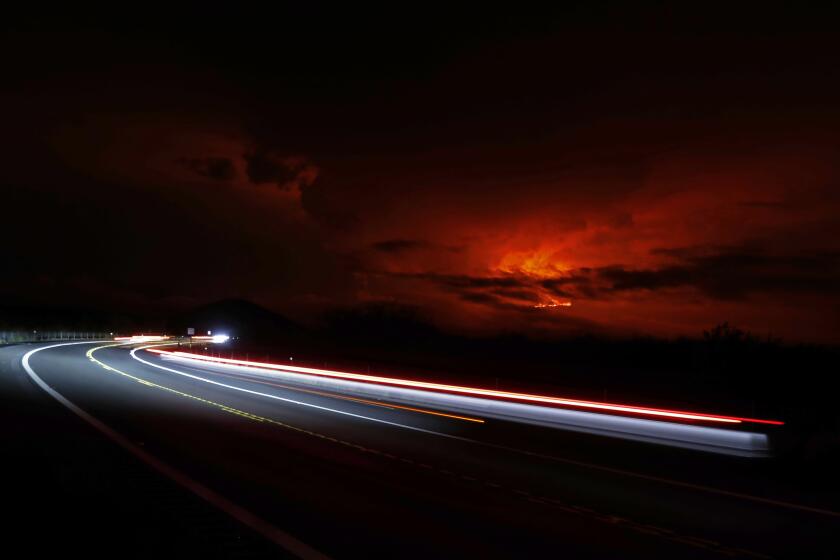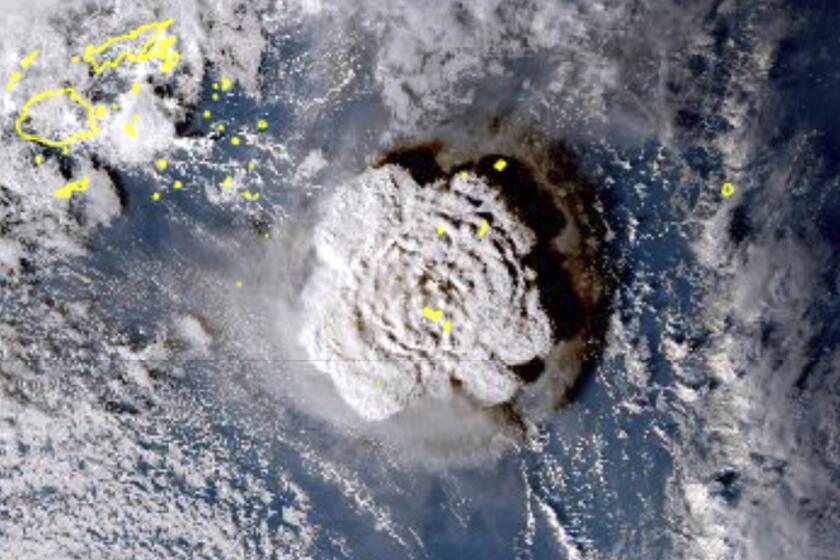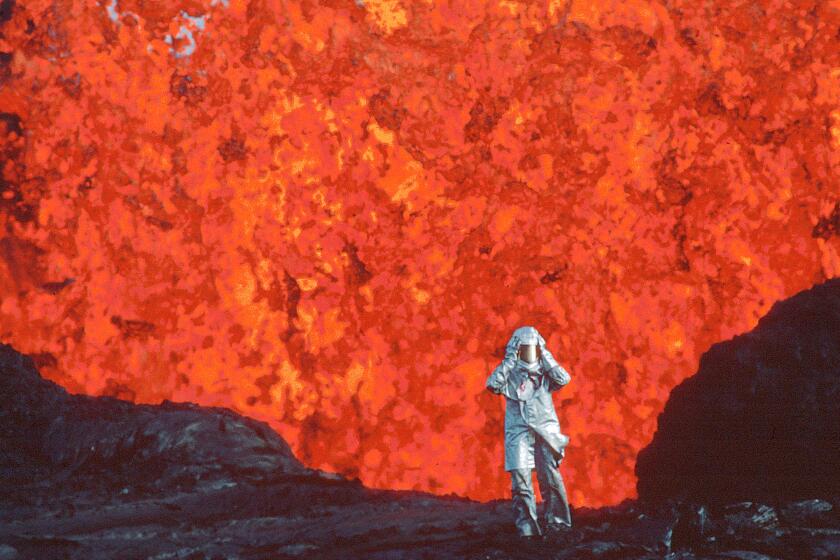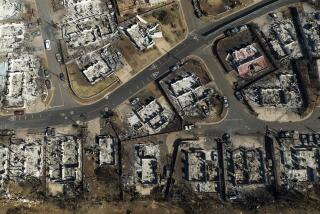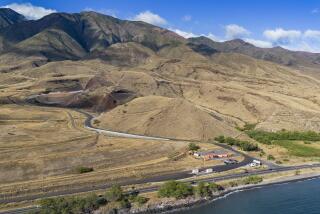Eruption of Mauna Loa ignites concern among residents — and curiosity among onlookers
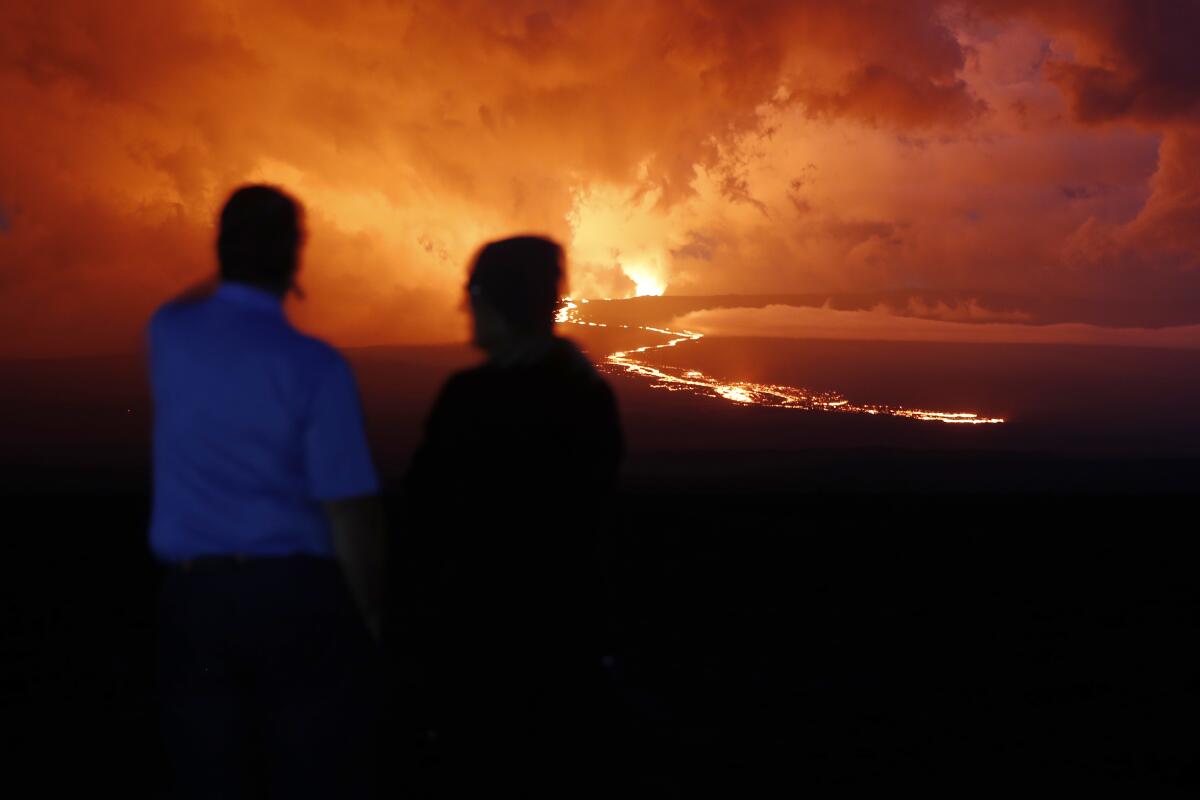
HILO, Hawaii — The first eruption in 38 years of the world’s largest active volcano is attracting onlookers to a national park for “spectacular” views of the event, but it’s also dredging up bad memories among some Hawaii residents who have been through harrowing volcanic experiences in the past.
It was just four years ago that Nicole Skilling fled her home near a community where more than 700 homes were destroyed by lava. She relocated to the South Kona area, only to find herself packing her car with food and supplies this week after Mauna Loa erupted late Sunday.
Officials were initially concerned that lava flowing down the side of the volcano would head toward South Kona, but scientists later assured the public that the eruption migrated to a rift zone on Mauna Loa’s northeast flank and wasn’t threatening any communities.
Still, the uncertainty is somewhat unnerving.
“It just happened last night, so I really haven’t had a lot of time to worry about it yet,” Skilling said Monday. “And thankfully, right now, it’s at the northeast rift zone. But if it breaks on the west side, that’s when we’re talking about coming into a large populated area. ... That’s why I do have a little bit of PTSD.”
Even though there were no evacuation orders, some people decided to leave their homes, prompting officials to open shelters in the Kona and Kau areas. Very few, if any, stayed in them overnight, Hawaii County Mayor Mitch Roth said, and they were to close Tuesday.
Hawaii’s health officials urge people to cut back on outdoor exercise as Mauna Loa erupts for the first time in nearly 40 years, spewing toxic gases.
Despite that, some in the area were preparing for unpredictable changes.
Kamakani Rivera-Kekololio, who lives in the South Kona community of Hookena, was keeping supplies like food and blankets in his car.
“We’re being makaukau for anything,” Rivera-Kekololio said, using the Hawaiian word for “ready.”
Ken Hon, scientist-in-charge at the Hawaiian Volcano Observatory, said Tuesday that the lava was flowing “not super fast” at less than 1 mph, though the exact speed wasn’t yet clear. It was moving downhill about six miles from Saddle Road, which connects the east and west sides of the island. The flow was likely to slow down about four miles from the road when it hit flatter ground Tuesday or Wednesday.
An undersea volcano in Tonga shot millions of tons of water vapor into the atmosphere, which might warm the Earth’s surface over the next few years.
“We’re not even sure it will reach the highway, but that is certainly the next step in progress if it continues on these trends,” Hon said, adding that it’s also possible a fissure could open and drain away some of the supply feeding the flow.
The smell of volcanic gases and sulfur was thick in the air Tuesday along Saddle Road, where people were watching a wide stream of lava creep closer. Clouds cleared to reveal a large plume of gas and ash rising from an open summit vent above the flow.
Gov. David Ige issued an emergency proclamation.
“We’re thankful the lava flow is not affecting residential areas at this time, allowing schools and businesses to remain open,” he said in a statement. “I’m issuing this Emergency Proclamation now to allow responders to respond quickly or limit access, if necessary, as the eruption continues.”
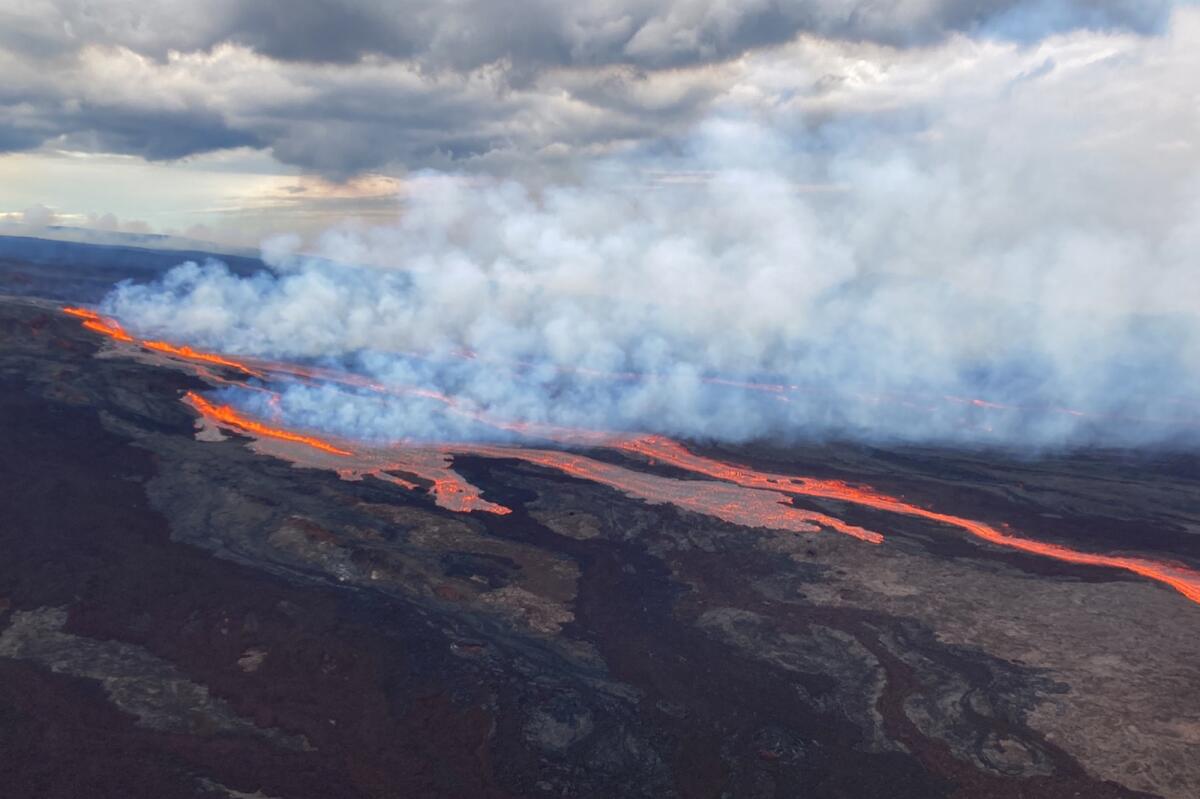
Hon said lava crossed the Mauna Loa Observatory access road Monday night and cut off power to the facility. It could move toward the county seat of Hilo, he added, but that could take a week or longer.
Meanwhile, scientists are trying to measure the gas emitted from the eruption.
“It’s just very early in this eruption right now,” Hon said.
The eruption is drawing visitors to Hawaii Volcanoes National Park, which is open 24 hours a day. “The viewing has been spectacular” especially before sunrise and at night, park spokeswoman Jessica Ferracane said.
News Alerts
Get breaking news, investigations, analysis and more signature journalism from the Los Angeles Times in your inbox.
You may occasionally receive promotional content from the Los Angeles Times.
Visitors there are currently able to witness two eruptive events: the glow from Kilauea’s lava lake and lava from a Mauna Loa fissure.
“This is a rare time where we have two eruptions happening simultaneously,” Ferracane said.
People in the northern Hilo neighborhood closest to the Mauna Loa eruption were cautious but not overly scared Tuesday.
Lindsay Cloyd, 33, said it makes her a bit nervous, but she feels safe and is also in awe of the forces of nature manifesting in her backyard.
The true story of volcano lovers Katia and Maurice Krafft is told by director Sara Dosa and narrated by Miranda July in documentary “Fire of Love.”
Originally from Utah and having lived in Hawaii for only a few years, she has never experienced a volcanic eruption.
“I feel so humbled and small,” she said, adding that “it’s a profound, incredible experience to get to be here while that’s happening.”
Down the street, Thomas Schneider, 38, an optical engineer at the Gemini Observatory on Mauna Kea, just finished building his new home in the neighborhood.
The threat of lava never came up when he was buying the property, but he has lived in Hilo for more than a decade and knew the risks.
All indications are that the Ahyi Seamount began erupting in mid-October in the Northern Mariana Islands, about 3,800 miles west of Honolulu.
“If you were to look around my property, you would see lava rock formations sticking out,” he said. “We live on an active volcano, so everywhere is kind of a lava zone.”
Mauna Loa’s last eruption came close to his neighborhood but stopped short.
He said he’s not afraid.
“I’ve been waiting since I moved here to see Mauna Loa go off — it’s supposed to be spectacular,” he said. “It’s kind of exciting that it’s finally erupting.”
More to Read
Sign up for Essential California
The most important California stories and recommendations in your inbox every morning.
You may occasionally receive promotional content from the Los Angeles Times.
